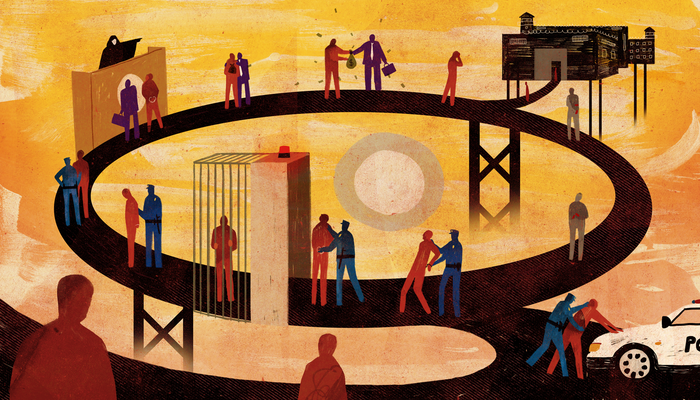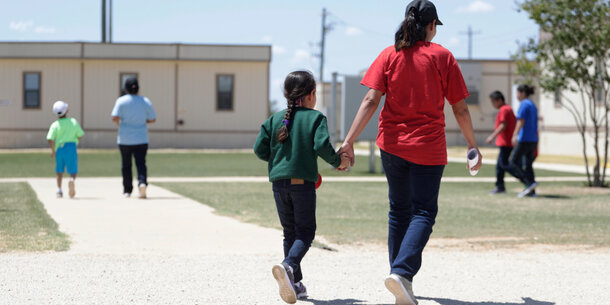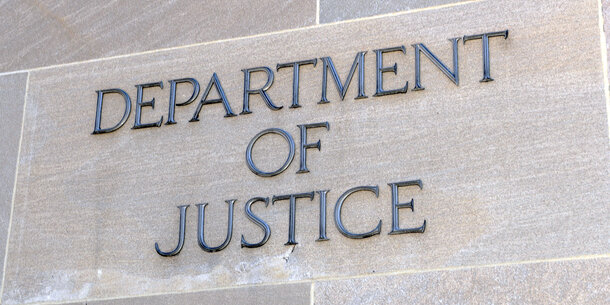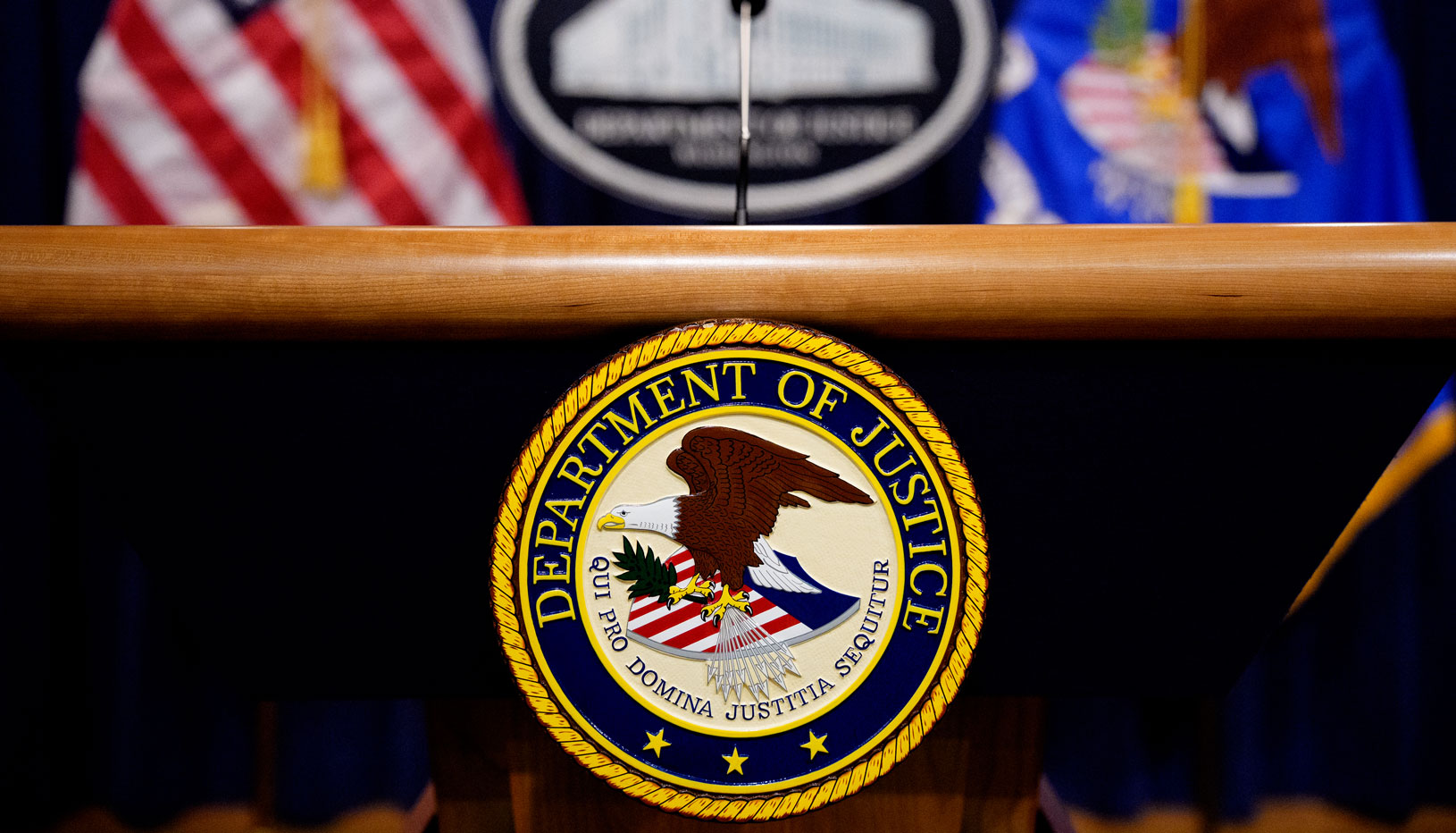When people think of the American criminal justice system, they think of prisons, lengthy sentences, and parole hearings. They also think of serious offenses such as murder, aggravated assault, and rape. But the majority of cases are less serious offenses, as defined in statute, including drug possession, shoplifting, gambling, public drunkenness, disorderly conduct, vandalism, speeding, simple assault, and driving with a suspended license. 1 For many Americans, minor offenses — that is, misdemeanors, violations, and infractions — are the primary entry point into the criminal justice system. Entanglement in this part of the system is anything but minor. 2
The costs of resolving a case are often high and can require months of court appearances or other compliance requirements. 3 These obligations take people away from family duties, jobs, and community responsibilities. Arrests, let alone convictions, can have lifelong consequences, including restricted access to jobs, places to live, health care, and education. 4 For example, a 2020 Brennan Center report found that annual earnings for people with a misdemeanor conviction decrease on average by 16 percent. 5 The harm falls disproportionately on communities of color, many of which already struggle with concentrated poverty and other forms of social disadvantage. 6 These mutually reinforcing realities can propel people back into the system. 7
Despite its broad reach, the minor offense system is difficult to quantify. Government officials often do not collect data on infractions, civil violations, and other offenses they consider too trivial to count. 8 The data that is collected — typically data on misdemeanors — is likely an undercount. 9 Even so, in the United States, misdemeanors amount to roughly three-quarters of all criminal cases filed each year. 10 Every day, tens of thousands of people are ticketed, arrested, or arraigned for a misdemeanor, making it a central feature of the United States’ crisis of overcriminalization and an engine of its overreliance on incarceration. 11
In recent years, scholars and legal practitioners have brought attention to the need to rein in the sprawling minor offense system. 12 Misdemeanor adjudication has earned a reputation of assembly-line justice that lacks meaningful public defense or due process protections. 13 Some researchers have described it as a means to mark and manage disadvantaged groups deemed potential risks, whereby the “process is punishment.” 14 In addition to the degradation of arrest, the imposed obligations and sanctions — frequent court appearances, the opportunity cost of lost wages, fines and fees, collateral consequences of a criminal record, and even jail detention — are frequently disproportionate to the severity of the crime. 15
Minor offense enforcement also consumes an inordinate amount of government resources. Existing estimates for the policing and court costs of a single misdemeanor offense range from $2,190 to $5,896. 16 And the overall public safety benefit is questionable. A 2021 study found that on average, people charged with nonviolent misdemeanors who were not prosecuted were 53 percent less likely to face new criminal charges than those who were prosecuted. Even more, those without a prior criminal record were 81 percent less likely to receive a new complaint. 17
As concern about the minor offense system has grown, efforts to shrink it have proliferated. 18 At the same time, since the start of the Covid-19 pandemic, many people in urban areas have perceived or experienced increased physical and social disorder in public spaces — petty theft, open drug use, public intoxication, people suffering mental health crises, homeless encampments, defacement of property, transit fare evasion, and public urination. 19 Petty and nuisance offenses, visible poverty, and public displays of disorderly and unpredictable behavior, coupled with high-profile media coverage of violent crimes and harassment, have renewed calls for stronger enforcement of lower-level offenses. 20
This report seeks to shed light on minor offense enforcement — what has changed in recent years, what has not, and what can be done to fix it. Building on previous scholarship, it offers an updated national snapshot of the scale of misdemeanor cases filed between 2018 and 2021, highlighting changes over the Covid-19 pandemic.
The analysis then homes in on New York City, a jurisdiction at the center of many debates about how to best deploy finite law enforcement resources to achieve more security and orderliness in public spaces. New York was the birthplace of “broken windows” policing — a 1990s-era law-and-order strategy based on the idea that police can mitigate the growth of more serious crime by aggressively targeting minor crimes and violations of public order. But the city also has a rich history of criminal justice reform, particularly in shrinking unnecessarily punitive responses to minor offenses. 21 Such reforms include diversion programs and other alternatives to incarceration, decriminalization of some minor offenses (e.g., low-level marijuana possession), and crisis response and other restorative strategies for addressing safety concerns. 22 Many of these initiatives, though small, may be instructive for other jurisdictions. This study investigates how efforts to shrink the system changed the enforcement of minor criminal offenses in New York City from 2016 to 2022.
Misdemeanors still compose the bulk of criminal cases filed in New York City — around 75 percent. However, in the city and across the country, the absolute number of such cases declined across nearly all years under review. This continued a downward trend from at least 2007 nationwide and from 2010 in New York City. 23 Substantial decreases were observed in 2020, unsurprising given lockdown orders in many jurisdictions including New York City. Enforcement rebounded in 2021 both nationally and in the city after pandemic restrictions were lifted, though they stayed below 2019 levels. These trends may reflect important differences in both offending and enforcement patterns.
One troubling pattern, however, remained remarkably stable. Despite reduced unnecessary enforcement and increased use of more effective alternative responses, profound racial disparities in minor offense cases in New York City proved stubbornly consistent, as seen elsewhere. 24 Between 2016 and 2022, Black and Latino people made up just under 50 percent of the city’s population but consistently comprised more than 80 percent of people charged with low-level offenses. 25
To understand better why racial disparities in enforcement persist in New York City, Brennan Center researchers engaged police, prosecutors, court officials, city government officials, criminal justice advocates, community-based service providers, and community leaders impacted by misdemeanor enforcement. Supported by previous research as well as new Brennan Center data analysis, these stakeholders shed light on the drivers of interactions with the minor offense system that perpetuate concentrated enforcement among Black and Latino populations in some low-income communities. 26 These include social disadvantages such as poverty, housing insecurity, mental illness, and substance use; poor conditions and a lack of resources in some of those communities; and the criminal justice system’s persistent inability to address social problems and community needs.
Addressing these complex problems requires looking beyond a simple binary of aggressive enforcement versus inaction. This report illustrates new data about a shrinking minor offense system, one that also features persistent racial disparities and geographic concentration in enforcement. The findings are intended to help state and local policymakers more appropriately deploy resources to reduce crime and build safety and community well-being. Although rooted in New York City, these findings are applicable to other jurisdictions around the country that aim to accomplish this goal while eschewing a return to an overly punitive and wasteful approach to enforcement of minor criminal offenses.
Endnotes
-
1
Alexandra Natapoff, “Misdemeanors,” Annual Review of Law and Social Science 11 (2015): 255–57, https://www.annualreviews.org/doi/pdf/10.1146/annurev-lawsocsci-120814–121742. -
2
Jenny Roberts, “Why Misdemeanors Matter: Defining Effective Advocacy in the Lower Criminal Courts,” University of California Davis Law Review 45 (2006): 277–372, 280–82, https://digitalcommons.wcl.american.edu/cgi/viewcontent.cgi?article=1292&context=
facsch_lawrev. Also see Issa Kohler-Hausmann, Misdemeanorland (Princeton, NJ: Princeton University Press, 2018), 1. -
3
See, e.g., Josh Bowers, “Punishing the Innocent,” University of Pennsylvania Law Review 156, no. 5 (2008): 1117, 1144, 1132–34 (discussing process costs in low-stakes cases), https://scholarship.law.upenn.edu/cgi/viewcontent.cgi?article=1233&
context=penn_law_review. Also see Malcolm Feeley, The Process Is Punishment (New York, NY: Russell Sage Foundation, 1979), 31–33. -
4
See, e.g., Eisha Jain, “Arrests as Regulation,” Stanford Law Review 67, no. 4 (2015): 809, 826–44, https://scholarship.law.georgetown.edu/facpub/1415/ (noting that low-level arrests and convictions can result in sex offender registration, license suspension, pension loss, loss of public housing, and deportation; and that even old or minor arrests and convictions can pose a barrier to accessing and retaining work). Also see Alexandra Natapoff, Punishment Without Crime (New York, NY: Basic Books, 2018), 3; Issa Kohler-Hausmann, “Managerial Justice and Mass Misdemeanors,” Stanford Law Review 66, no. 3 (2014): 611, 691, https://www.stanfordlawreview.org/wp-content/uploads/sites/3/2014/03/66_Stan_L_Rev_611_Kohler-Hausmann.pdf; and Terry-Ann Craigie, Ames Grawert, and Cameron Kimble, Conviction, Imprisonment, and Lost Earnings: How Involvement with the Criminal Justice System Deepens Inequality, Brennan Center for Justice, September 15, 2020, 2, 6, 11–12, https://www.brennancenter.org/our-work/research-reports/conviction-imprisonment-and-lost-earnings-how-involvement-criminal. -
5
See Craigie, Grawert, and Kimble, Conviction, Imprisonment, and Lost Earnings, 2, 6–7, 11, 14–15. -
6
See, e.g., Fred Butcher and Michael Rempel, Racial Disparities in Misdemeanor Justice: Data for New York City, 2019–2020, Center for Justice Innovation, January 2022, https://www.innovatingjustice.org/sites/default/files/media/document/2022/NYC_Misdemeanor_Justice_Data_Report_NYC.pdf; and Shamena Anwar et al., Creating a Path Forward to Reduce Racial Disparities in the Criminal Justice System in Allegheny County, RAND Corporation, RTI International, December 2023, https://iop.pitt.edu/sites/default/files/Documents/RAND_RTI_Final_Report.pdf -
7
See, e.g., Alexi Jones and Wendy Sawyer, “Arrest, Release, Repeat: How Police and Jails Are Misused to Respond to Social Problems,” Prison Policy Initiative, August 2019, https://www.prisonpolicy.org/reports/repeatarrests.html. -
8
For example, limited jurisdiction courts deal with the lowest-level misdemeanors, violations, and infractions. They go by a variety of other names, including “municipal,” “town,” “summary,” “justice,” “mayor,” and “police” courts. They collect and report very little data and are often not included in databases such as the National Center for State Courts’ Court Statistics Project. See Alexandra Natapoff, “Criminal Municipal Courts,” Harvard Law Review 134, no. 3 (2021): 966, 975–77, 981–82, https://harvardlawreview.org/print/vol-134/criminal-municipal-courts. -
9
Megan Stevenson and Sandra Mayson, “Misdemeanors by the Numbers,” Boston College Law Review 61 (2020): 971, 976–78, https://scholarship.law.upenn.edu/cgi/viewcontent.cgi?article=3395&context=faculty_scholarship. -
10
Megan Stevenson and Sandra Mayson, “The Scale of Misdemeanor Justice,” Boston University Law Review 98 (2018): 731, 746, https://scholarship.law.upenn.edu/cgi/viewcontent.cgi?article=3394&context=faculty_scholarship (estimating that in the years 2008–2016, misdemeanors represented 74 to 83 percent of total criminal caseloads for states reporting data). -
11
Erik Luna, “The Overcriminalization Phenomenon,” American University Law Review 54, no.3 (2005): 703, 706–7, https://digitalcommons.wcl.american.edu/cgi/viewcontent.cgi?article=1707&context=aulr. Also see Ian Weinstein, “The Adjudication of Minor Offenses in New York City,” Fordham Urban Law Journal 31, no. 4 (2004): 1157, 1163–64, https://ir.lawnet.fordham.edu/cgi/viewcontent.cgi?article=1899&context=ulj. -
12
See, e.g., Kohler-Hausmann, “Managerial Justice and Mass Misdemeanors”; Natapoff, “Misdemeanors”; Amanda Geller, “The Process Is Still the Punishment: Low-Level Arrests in the Broken Windows Era,” Cardozo Law Review 37, no. 3 (2016): 1025, http://cardozolawreview.com/wp-content/uploads/2018/08/GELLER.37.3.pdf; Greg Berman and Julian Adler, “Toward Misdemeanor Justice: Lessons from New York City,” Boston University Law Review 98, no. 3 (May 2018): 981, https://www.bu.edu/bulawreview/files/2018/06/BERMAN-ADLER.pdf; Robert C. Boruchowitz, Malia N. Brink, and Maureen Dimino, Minor Crimes, Massive Waste: The Terrible Toll of America’s Broken Misdemeanor Courts, National Association of Criminal Defense Lawyers, 2009, 10–11, 25–26, https://www.nacdl.org/getattachment/20b7a219-b631–48b7-b34a-2d1cb758bdb4/minor-crimes-massive-waste-the-terrible-toll-of-america-s-broken-misdemeanor-courts.pdf; and Roberts, “Why Misdemeanors Matter.” See also Meredith Patten et al., Trends in Misdemeanor Arrests in New York, 1980 to 2017, Misdemeanor Justice Project at John Jay College of Criminal Justice, December 2018, 13–16, https://datacollaborativeforjustice.org/wp-content/uploads/2020/
04/NYS_Misd_Trends.pdf; and Becca Cadoff, Preeti Chauhan, and Erica Bond, Misdemeanor Enforcement Trends Across Seven U.S. Jurisdictions, Data Collaborative for Justice at John Jay College of Criminal Justice, October 2020, https://datacollaborativeforjustice.org/wp-content/uploads/2020/10/2020_20_10_Crosssite-Draft-Final.pdf. For earlier research see, e.g., Feeley, The Process Is Punishment; Josh Bowers, “Legal Guilt, Normative Innocence, and the Equitable Decision Not to Prosecute,” Columbia Law Review 110, no. 7 (2010): 1655, https://ssrn.com/abstract=1569560; and Alisa Smith and Sean Maddan, Three-Minute Justice: Haste and Waste in Florida’s Misdemeanor Courts, National Association of Criminal Defense Lawyers, July 2011, 9, https://www.nacdl.org/getattachment/eb3f8d52-d844–487c-bbf2–5090f5ca4be3/three-minute-justice-haste-and-waste-in-florida-s-misdemeanor-courts.pdf. -
13
See Feeley, The Process Is Punishment; Boruchowitz, Brink, and Dimino, Minor Crimes, Massive Waste, 12–17; Roberts, “Why Misdemeanors Matter,” 277, 295; and Anjali Pathmanathan, “The Myth of Preliminary Due Process for Misdemeanor Prosecutions in New York,” Harbinger 42 (2018): 82, https://socialchangenyu.com/wp-content/uploads/2018/04/42_82_PDF_Pathmanathan.pdf. -
14
Kohler-Hausmann, “Managerial Justice,” 611, 624n27, 643; and Feeley, The Process Is Punishment (coining the title term when describing New Haven, Connecticut’s lower criminal courts). -
15
Bowers, “Punishing the Innocent,” 1132–34. See also Mayson and Stevenson, “Misdemeanors by the Numbers.” -
16
This was calculated using studies from 1995 and 2008; estimates were adjusted for inflation. See Steve Aos et al., The Comparative Costs and Benefits of Programs to Reduce Crime, Washington State Institute for Public Policy, May 2001, 82, https://www.wsipp.wa.gov/ReportFile/756/Wsipp_The-Comparative-Costs-and-Benefits-of-Programs-to-Reduce-Crime-v-4–0_Full-Report.pdf; and Kathryn E. McCollister, Michael T. French, and Hai Fang, “The Cost of Crime to Society: New Crime-Specific Estimates for Policy and Program Evaluation,” Drug and Alcohol Dependence 108, nos. 1–2 (April 2010): 104, https://doi.org/10.1016/j.drugalcdep.2009.12.002. -
17
Amanda Agan, Jennifer Doleac, and Anna Harvey, “Misdemeanor Prosecution,” National Bureau of Economic Research, Working Paper No. w28600, 2021, https://www.nber.org/papers/w28600. -
18
See, e.g., Boston University Law Review 98, no. 3 (2018) (publishing nine articles presented at a May 2018 symposium titled “Misdemeanor Machinery: The Hidden Heart of the American Criminal Justice System”), https://www.bu.edu/bulawreview/archives/volume-98-number-3-may-2018/. For examples of jurisdictions reforming their misdemeanor systems, see Ram Subramanian et al., Incarceration’s Front Door: The Misuse of Jail in America, Vera Institute of Justice, 2015, 26–27, 39, https://www.vera.org/downloads/publications/incarcerations-front-door-report_02.pdf; and Rebecca Silber, Ram Subramanian, and Maia Spotts, Justice in Review: New Trends in State Sentencing and Corrections 2014–2015, Vera Institute of Justice, May 2016, https://www.vera.org/downloads/publications/state-sentencing-and-corrections-trends-2014–2015-updated.pdf (e.g., California AB 2124 [2014], Idaho SB 1352 [2014], and North Carolina HB 369 [2014]). -
19
Conor Friedersdorf, “10 Reader Views on Crime in Their Neighborhoods,” Atlantic, June 13, 2022, https://www.theatlantic.com/newsletters/archive/2022/06/10-reader-views-on-crime-in-their-neighborhoods/661266/; Henry Skarecky, “What Is Metro Doing About Fare Evasion?,” Georgetown Voice, December 9, 2022, https://georgetownvoice.com/2022/12/09/what-is-metro-doing-about-fare-evasion/; and Joseph Konig, “NYPD Launches ‘Quality-of-Life’ Initiative That Critics Call Return to ‘Broken Windows’ Policing,” Spectrum News NY1, March 23, 2022, https://ny1.com/nyc/all-boroughs/public-safety/2022/03/23/nypd-launches—quality-of-life—initiative-that-critics-call-return-to—broken-windows—policing. -
20
Kiara Alfonseca, “As Incidents of Violent Crime by the Homeless Grab Headlines, Activists Urge Caution and Solutions,” ABC News, February 5, 2022, https://abcnews.go.com/US/incidents-violent-crime-homeless-grab-headlines-activists-urge/story?id=82443787; Chris Herring, “Complaint-Oriented Policing: Regulating Homelessness in Public Space,” American Sociological Review
84, no. 5 (October 2019): 769–800, https://doi.org/10.1177/
0003122419872671; Jeffrey Brown and Sam Weber, “New York Struggles with a Sharp Rise in Violent Crime amid COVID-19,” PBS News Hour, May 20, 2022, https://www.pbs.org/newshour/show/new-york-struggles-with-a-sharp-rise-in-violent-crime-amid-covid-19; Emily Hoeven, “Crime, Homelessness Emerge as California Democrats’ Weak Spots,” Cal Matters, February 16, 2022, https://calmatters.org/newsletters/whatmatters/2022/02/california-crime-homelessness/; Chris Daniels, “Seattle Mayoral Candidate Bruce Harrell Says Homeless Who Refuse Shelter Should Face Consequences,” KING 5, September 2, 2021, https://www.king5.com/article/news/local/homeless/seattle-mayoral-candidate-bruce-harrell-homelessness-lorena-gonzalez/281–425c9172–2883–4e7f-b155–4f636a74307b; and Jay Caspian Kang, “In Big City Politics, a Call to Fund the Police,” New York Times, December 20, 2021, https://www.nytimes.com/2021/12/20/opinion/mayors-fund-police.html. A flood of articles in major media has brought a greater focus on issues of public order. See, e.g., Heather Mac Donald, “A Rejection of ‘Broken Windows Policing’ over Race Actually Hurts Minority Neighborhoods,” Manhattan Institute, Dallas Morning News, March 4, 2016, https://manhattan.institute/article/a-rejection-of-broken-windows-policing-
over-race-actually-hurts-minority-neighborhoods; and Zachary B. Wolf, “A Hard Look at New York’s Controversial New Approach to the Homeless,” CNN, December 3, 2022, https://edition.cnn.com/2022/12/03/politics/nyc-hospitalize-mentally-ill-what-matters/index.html. -
21
For the theory, see George L. Kelling and James Q. Wilson, “Broken Windows: The Police and Neighborhood Safety,” Atlantic, March 1982, https://cdn.theatlantic.com/media/archives/1982/03/249–3/132638105.pdf. New York City’s police commissioner William Bratton applied the broken windows theory to the transit system in 1990, then scaled up to the entire city of New York. See William Bratton, Broken Windows and Quality-of-Life Policing in New York City, New York City Police Department, 2015, https://www.nyc.gov/html/nypd/downloads/pdf/analysis_and_planning/qol.pdf. -
22
For the city’s long history of diversion, see Judith A. Greene and Vincent Schiraldi, “Better by Half: The New York City Story of Winning Large-Scale Decarceration While Increasing Public Safety,” Federal Sentencing Reporter 29, no. 1 (2016): 22–38, 27, https://www.justicestrategies.org/sites/default/files/publications/BBHFINALGreeneSchiraldipub_1.pdf. For diversion programs and problem-solving courts, see generally New York State Unified Court System, Office of Justice Initiatives, “Problem-Solving Courts,” last accessed October 9, 2023, https://ww2.nycourts.gov/COURTS/problem_solving/index.shtml; Center of Justice Innovation, “Diversion,” last accessed October 9, 2023, https://www.innovatingjustice.org/areas-of-focus/diversion; and NYC Mayor’s Office for Criminal Justice, “Alternatives to Incarceration,” last accessed October 9, 2023, https://criminaljustice.cityofnewyork.us/programs/alternatives-to-incarceration. An example of a restorative justice alternative-to-incarceration program is Common Justice, a program that uniquely targets people charged with violent felonies, such as assault, burglary, and robbery. Common Justice, “Common Justice Model,” last accessed October 9, 2023, https://www.commonjustice.org/common_justice_model. -
23
Stevenson and Mayson, “The Scale of Misdemeanor Justice,” 731, 747 (noting that the national misdemeanor case-filing rate fell between 2007 and 2016 from more than 16 million to roughly 13 million, a decline of almost 17 percent); Patten et al., Trends in Misdemeanor Arrests in New York, 1980 to 2017, 18, figure 3 (showing the peak in New York City at 250,000 misdemeanor arrests in 2010 and more than 649,000 stops in 2011). -
24
Cadoff, Chauhan, and Bond, Misdemeanor Enforcement Trends, 9–10, 12 (showing long-term racial disparities in misdemeanor arrest for Black, Latino, and white populations in seven jurisdictions). -
25
See “Estimated Population, Between 2017–2021” in PolicyMap, data from U.S. Census Bureau, American Community Survey, accessed November 21, 2023, http://www.policymap.com; “Estimated Number of Black or African American People Not Hispanic or Latino, Between 2017–2021” in PolicyMap, data from U.S. Census Bureau, American Community Survey, accessed November 21, 2023, http://www.policymap.com; and “Estimated Number of Hispanic or Latino People, Between 2017–2021” in PolicyMap, data from U.S. Census Bureau, American Community Survey, accessed November 21, 2023, http://www.policymap.com. -
26
See, e.g., Ruth McCausland and Eileen Baldry, “Who Does Australia Lock Up? The Social Determinants of Justice,” International Journal for Crime, Justice and Social Democracy 12, no. 3 (2023): 37–58, https://www.crimejusticejournal.com/article/view/2504/1351.






